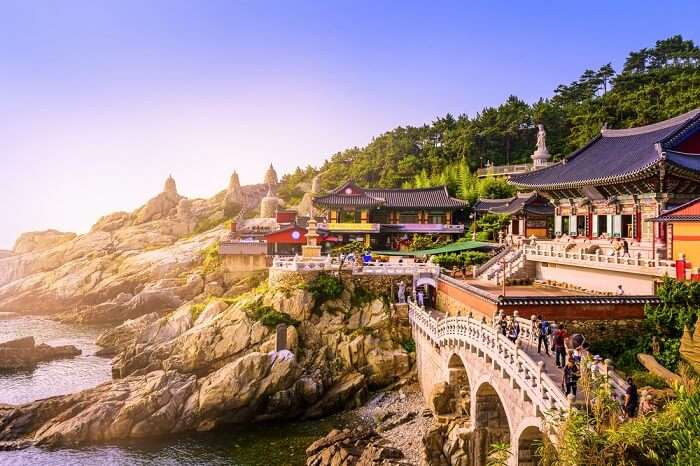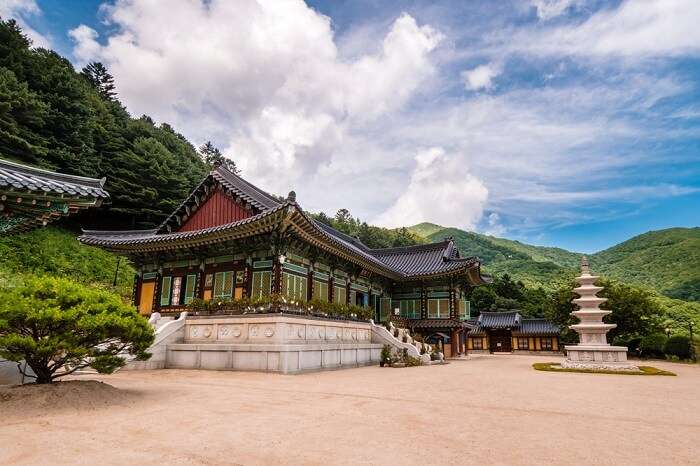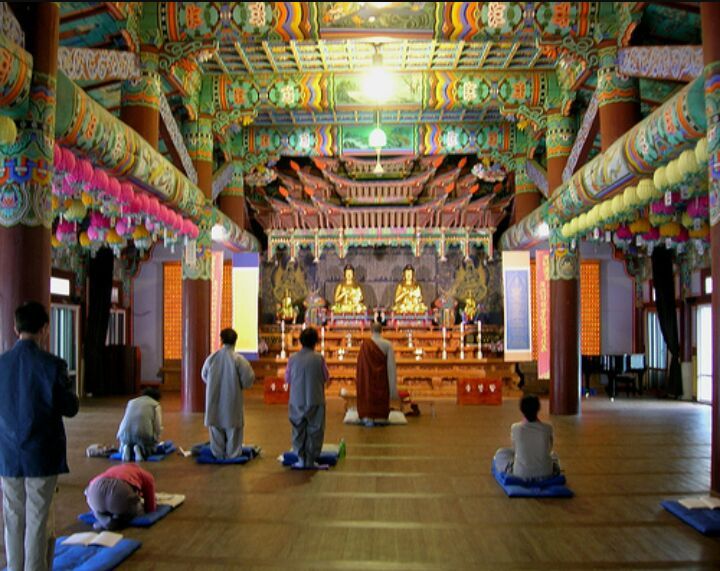
South Korea
Language
Standard Korean
Koreans, unsurprisingly, speak Korean, and a standard version is understood throughout the country. It doesn’t share many similarities with Western languages, so even learning to pronounce a few key words and phrases can be tricky.
Written Korean is also unique, using a phonetic system called hangul. It stacks sounds into blocks that represent syllables, and its consistency means it’s fairly easy to pick up. What may look alien at first can quickly begin to make sense.
Culture

Culture
Despite the political unrest that resulted in the division of the region, these two countries still share the same culture and traditional values. Korea is divided by boundaries, but still united by culture.
Korea is greatly influenced by the Chinese and Japanese cultures. This influence can be seen by Confucianism, which established many traditions that can be seen in modern Korea today. These traditions include the ethical code of conduct in social life and showing respect to the elders and family.
Koreans also believe in sincerity and loyalty and follow certain codes of conduct while meeting, eating, praying and even celebrating. At times when many other cultures would shake hands, Koreans bow. They bow as a sign of gratitude and respect to the person they are meeting.
Tradtional Korean clothes

A Hanbok (South Korean) or Joseon-ot (North Korean) is a traditional Korean dress for semi-formal or formal attire during traditional occasions such as festivals, celebrations, and ceremonies. It is characterized by vibrant colors and simple lines without pockets. Although the term literally means "Korean clothing", hanbok usually refers specifically to clothing of the Joseon period
![Baji (Korean: 바지) is a kind of traditional Korean pant that is part of the hanbok.[1][2] A baji is baggy and loose, so it is](https://cdn1.mindomo.com/resources/img/editor/imagesources/loading-image.svg)
Baji (Korean: 바지) is a kind of traditional Korean pant that is part of the hanbok.[1][2] A baji is baggy and loose, so it is tied around the waist.[1] In the past, Korean men wore baji as outer clothing, but for women, it gradually became part of the inner clothing.[1] Today, women wear chima for their outer clothes.
Food

Kimchi (fermented vegetables)
One of the oldest and probably the most essential dishes in Korean cuisine, kimchi is a spicy and sour dish made up of fermented vegetables. It is prepared with various kinds of ingredients, but the most common main ingredient is cabbage. Kimchi is popular among foreigners for its unique flavor, as well as its high nutritional value, fiber content and low calorie content. However, for Koreans, it is most popular due to its significant cultural value. Without kimchi, dinner is considered incomplete.

Bibimbap (mixed rice)
Bibimbap is essentially a bowl of mixed ingredients including, but not limited to, rice, namul (seasoned and sautéed vegetables), mushrooms, beef, soy sauce, gochujang (chili pepper paste), and a fried egg. The ingredients found in bibimbap vary by region, and the most famous versions of the dish are found in Jeonju, Tongyeong, and Jinju.

Bulgogi (marinated beef barbecue)
A juicy, savory dish of grilled marinated beef, bulgogi is one of the most popular Korean meat dishes throughout the world, and was ranked as the 23rd most delicious food in the world according to CNN Travel’s reader’s poll in 2011. It is often grilled with garlic and sliced onions to add flavor to the meat. The meat is usually wrapped in lettuce and it is also traditionally eaten with ssamjang (a thick, red spicy paste).
Famous places

Jeju Island
Off the southern coast of South Korea is Jeju Island, the country’s only Special Autonomous Province. Nicknamed Island of the Gods, Jeju is a subtropical destination known as one of the top honeymoon and vacation spots in South Korea. In addition to beautiful beaches, lava tubes and lush green scenery, Jeju boasts a long list of tourist attractions and amusement parks.

Busan
This second largest city of South Korea is known across the world for hosting Asia’s largest International film festival. Busan is an interesting amalgamation of skyscrapers, majestic mountains, beautiful beaches and magnificent Buddhist temples. Amongst the popular places to visit in Busan is the Haedong Yonggungsa temple along the coast and the interesting Jagalchi fish market. Foodies can relish the sea food spread at the numerous restaurants and enjoy local delicacies at the ubiquitous street food stalls.

PyeongchPyeongchang County
This is one of the best places in South Korea to experience tranquillity and awe-inspiring scenic beauty all around. Located in the Taebaek Mountains, this picturesque county 180 Kms away from Seoul hosted the prestigious Winter Olympics in February 2018. The Odaesan National Park is a hikers’ delight with trails going up the snow-peaked mountains, while the ski resorts Alpensia and Yongpyong are popular with skiers and snowboarders. The mountains are also home to many beautiful Buddhist shrines.
Education

The Korean public education structure is divided into three parts: six years of primary school, followed by three years of middle school and then three years of high school. In 1996 only about five percent of Korea's high schools were coeducational. The proportion of coeducational schools has increased by almost ten percent. However, classes in many coeducational high schools are still divided along gender lines. The curriculum is standardized so now both boys and girls study technology and domestic science.
Religion

Religion
Confucianism, Buddhism and Christianity are the main religions. Buddhism is the religion in Korea with the most followers and its teachings have a great impact on Korean lifestyle, culture and art. Yungdrung is a main symbol of Korean Buddhism and can be found in all temples and religious places in Korea.
The division of Korea has also caused a divergence in religious life in the two countries due to the different political structures. South Korea has been characterized by a rise of Christianity and Buddhism, while North Korea is considered a secular state.
